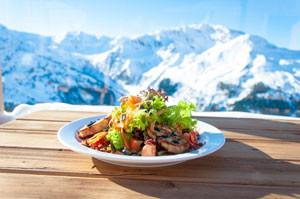Your Cart is Empty
FREE SHIPPING ON ORDERS OVER $20 - FREE HEALTHY SNACK WITH EVERY PURCHASE
Our site uses cookies. By using our site, you agree to our use of cookies. Privacy Policy
Menu
-
- Health Conditions
- Maximum Performance
- Accessories & Gear
- Altitude Training
- Athlete Overtraining Syndrome
- Core Strength
- Dangers of NSAIDS
- Detox / Cleanse
- Endurance Nutrition & Supplementation
- Energy Boosting
- Exercise & Immunity
- Flexibility
- Hydration
- Hypoglycemia / Bonking
- Hyponatremia
- Immunity Support
- Lab Testing
- Muscle Building
- Recovery
- Sports Drinks
- Package Bundles
- Adrenal Support
- Healthy Aging
- Athletic Performance
- Blood Sugar Balance
- Bone Support
- Daily Nutrition Essentials
- Daily Wellness
- Energy Support
- Fat Loss Support Bundle
- Female Fertility Bundle
- Female Hormone Balance
- Gut Health
- Heart Health
- Immunity Boosters
- Inflammation Control
- Injury Repair
- Joint Support
- Liver Support
- Menopause Support
- Men's Wellness
- Mood Lift
- Muscle Cramp Relief
- Muscle Builder
- Recovery
- Safe Travels
- Sleep Enhancers
- Stress Relief
- Thyroid Support
- Brands
- Blog
-
- Login

FREE SHIPPING ON ORDERS OVER $20 - FREE HEALTHY SNACK WITH EVERY PURCHASE
Our site uses cookies. By using our site, you agree to our use of cookies. Privacy Policy
Foods To Eat At Altitude
November 04, 2024 4 min read

When training or racing at altitude, changing your nutrition might not be the first thing that comes to mind, but this article might convince you otherwise.
As you ascend in altitude, less oxygen is available compared to sea level. In these conditions, hypoxia, or a lack of oxygen reaching the tissues will occur.
This means you're not going to be feeling your best.
Depending on the severity and rate of onset, hypoxia can cause some of the symptoms mentioned in our last blog post, How To Adapt To Altitude For Winter Sports.
There's not a lot you can do about the altitude, but there's a lot you can do to increase your energy, and chances of having an enjoyable trip. Continue reading and learn what to eat in high altitude.
Increase Carbohydrates for Quick Energy
When it comes to nutrition, training at altitude increases the use of carbohydrates for energy compared to training at sea level. Your body is just going to be a bit less efficient and will therefore need more readily-available sources of energy.
This means you may need to put more of an emphasis on carbohydrates in your pre-race or training meal and your overall diet. Inadequate intake of carbohydrates may hinder performance and decrease the time by which you can exercise before bonking or reaching exhaustion.
Focus on good quality carbohydrates, such as:
- Dates
- Bananas
- Sweet Potatoes
- Oats rather than sugary foods and refined white grains.
Note that we said "quality" carbohydrates!
Avoid increasing carbohydrates from sugary foods and refined white grains. In other words, skip the candy bars, gels and sports drinks and focus on real food.
Remember, vegetables are carbohydrates as well; increasing your intake can be a decent way to get additional nutrients in as well as healthy carbs. Our favorite clean carb source before a day of skiing is a baked sweet potato with butter or coconut oil melted on it, with a dash of cinnamon. It'll give you some quick carbs plus it's a warm breakfast. (Be sure to include some protein in that breakfast as well!)
Increase Iron-Rich Foods
In addition, exposure to altitude increases the production of red blood cells to help carry oxygen around the body, which increases the need for iron. Animal foods contain iron that's well absorbed by the body. Animal foods such as:
- Lean Beef
- Pork
- Chicken
- Eggs
- Tuna
- Salmon
 Avoid combining these foods with calcium-rich foods like milk, or tea, coffee, and cocoa as they can inhibit absorption of the iron.
Avoid combining these foods with calcium-rich foods like milk, or tea, coffee, and cocoa as they can inhibit absorption of the iron.
Plant foods, such as leafy greens (spinach, chard, beet, collard, etc.), dried fruit, tofu, lentils, oatmeal, beans, and fortified grains also provide iron but it’s not absorbed as well as animal iron.
That's ok though; to increase the absorption of iron from plant foods, combine it with a vitamin C source such as tomato sauce, peppers, oranges, strawberries, or pineapple.
If you still struggle with iron, you should consider taking an iron supplement -one that's effective, and gentle on your stomach and digestive tract!
I always suggest a twice-yearly iron test especially if you're an active person. Women are of course more susceptible to low iron, but this can happen in men as well. Vegans and vegetarians really need to keep tabs on their iron levels too!
Protect Your Immune System
Lastly, being at altitude puts additional stress on your body and your immune system. Before you ascend and while you are at altitude, be sure to eat foods that are anti-inflammatory, antioxidant and support a healthy immune system. Think vegetables and fruits of all colors of the rainbow.
- Red Strawberries
- Orange Carrots
- Yellow Bell Peppers
- Green Leafy Vegetables
- Blueberries
- Purple Eggplant
- Brown Mushrooms
- White Cauliflower
Include at least a serving of vegetables with lunch and dinner and a serving of fruit with breakfast, snack, and/or dessert. Dried fruit is an excellent, portable way to get iron, anti-oxidants, vitamins, and minerals.
Stay tuned for a portable carbohydrate, iron, and vitamin C containing recipe that would be great for your next ascent to altitude!
Our favorite immune booster is Immuni-T - we use this anytime it feels like a bug is trying to get hold of us! Also, get your vitamin D levels checked and supplement if needed. Low vitamin D levels are linked to increased risk of upper respiratory infections.
Avoid Alcohol
I know, no fun right? But the effects of alcohol will be enhanced at altitude. In the bloodstream, alcohol interferes with hemoglobin's ability to carry oxygen. Coupled with less oxygen availability that's normally at altitude, you'll really be low on oxygen if you drink.
Also, the diuretic (water-losing) effects of it will be accentuated, and dehydration is always a big risk at altitude. And, getting dehydrated will really sap your energy and contribute to headaches.
Remember though, your diet is only part of your success at altitude. Here are 3 other super important things you need to do, to be ready to play up high.
References:
1. Katayama, Keisho, et al. "Substrate utilization during exercise and recovery at moderate altitude." Metabolism 59.7 (2010): 959-966.
Leave a comment
Comments will be approved before showing up.
Free Athletic Stuff
-
Free Water Bottle With Purchase Of $100

Simply Add To Cart & Use Coupon Code: FREEBOTTLE
Free Visor With Purchase Of $150

Simply Add To Cart & Use Coupon Code: FREEVISOR
{"statementLink":"","footerHtml":"","hideMobile":false,"hideTrigger":false,"disableBgProcess":false,"language":"en","position":"left","leadColor":"#146ff8","triggerColor":"#146ff8","triggerRadius":"50%","triggerPositionX":"right","triggerPositionY":"bottom","triggerIcon":"wheels","triggerSize":"medium","triggerOffsetX":20,"triggerOffsetY":20,"mobile":{"triggerSize":"small","triggerPositionX":"right","triggerPositionY":"bottom","triggerOffsetX":10,"triggerOffsetY":10,"triggerRadius":"50%"}}
